Vegetable Chopping

What are some time-saving tips for chopping vegetables quickly and efficiently ?
Chopping vegetables can be a time-consuming task, but with these tips, you can save time and make the process more efficient. Let's dive into some helpful techniques: Use a Sharp Knife: Maintain Your Knives by regularly using a honing steel or getting them professionally sharpened. Use the right knife for the job. For example, use a chef's knife for larger vegetables and a paring knife for smaller ones. Peel Smart: Not All Vegetables Need Peeling. Some vegetables, like carrots and potatoes, have edible skins that add nutrients and flavor. Only peel if necessary. Use a vegetable peeler for quick and even peeling, or for soft-skinned vegetables like tomatoes, a simple scoring and peeling method can be faster. Cut Once, Use Multiple Times: Prep Ahead of Time when you have time, prep extra vegetables and store them in airtight containers for future use. When cooking multiple dishes that use the same vegetable, chop all at once and divide as needed. Uniform Size Matters: Aim for uniform cuts so that vegetables cook evenly and look neat when plated. Take time to practice precise cutting; it will speed up your chopping in the long run. Use a Food Chopper or Mandoline: For large quantities, an electric food chopper can save significant time. A mandoline slicer quickly produces uniform slices or juliennes, especially useful for vegetables like cucumbers or potatoes. Clean As You Go: Keep your workspace tidy by cleaning your cutting board and utensils as you go to avoid clutter that can slow you down. Have a designated area for scraps and waste to keep your chopping area clear. Learn to Chop Properly: Watch tutorials or take a cooking class to learn proper chopping techniques, which can significantly improve speed and safety. Make sure you're holding your knife correctly; grip the handle towards the base for more control and force. Multitask with Safety: While it's good to multitask (like starting to boil water while chopping), ensure that you are not compromising safety by rushing or being distracted. Prepare other ingredients that don't require heat while vegetables are roasting or simmering. Work with Wet Knives: Keeping your knife wet with water can help slice through sticky or wet foods like fresh fruits more easily. If you need thin, uniform slices, dip your ruler in water before using it to measure thickness while slicing. Invest in Quality Tools: Invest in non-slip, durable cutting boards that are gentle on your knives. Consider investing in other kitchen tools like a garlic press, herb stripper, or apple slicer to speed up specific tasks.

What is the best way to cook tempura batter ?
Tempura is a Japanese dish that originated in the late 16th century. It consists of seafood, vegetables, or other ingredients dipped in a wheat-flour batter and deep-fried. The key to perfect tempura lies in the preparation of the batter. Here are some tips on how to make the best tempura batter: Ingredients: - Vidalia Onions - These sweet onions are low in sulfuric compounds, which makes them easier to digest. They also have a lower fiber content than yellow or white onions, making them less likely to cause gas or bloating. - Garlic - Garlic is rich in antioxidants and has anti-inflammatory properties. It's also known for its immune-boosting benefits. - Ginger - Ginger has been used for centuries as a natural remedy for digestive issues. It can help relieve nausea and vomiting, reduce gas and bloating, and even alleviate symptoms of acid reflux. - Chicken Broth - Chicken broth is an excellent source of minerals like calcium, magnesium, and potassium. It also contains collagen, which is great for gut health. - Bone Broth - Bone broth is rich in amino acids like glycine and proline, which can help repair the gut lining and reduce inflammation. - Coconut Oil - Coconut oil contains medium-chain triglycerides (MCTs), which are easily digested and can provide quick energy for the body. It also has antimicrobial properties that can help support gut health. Preparation: 1. Chop your chosen vegetables into small pieces. This will ensure that they cook evenly and absorb the flavors of the broth. 2. In a large pot, heat up some coconut oil over medium heat. Add the chopped onions, garlic, and ginger, and sauté until they become fragrant and slightly softened. 3. Pour in the chicken broth and bone broth, then bring everything to a boil. 4. Once the broth is boiling, add in your chopped vegetables. Stir everything together so that the vegetables are fully submerged in the liquid. 5. Add salt, pepper, and any other desired seasonings to taste. Consider adding herbs like thyme or rosemary for additional flavor. 6. Reduce the heat to low and let the soup simmer for at least 30 minutes, or until the vegetables are tender and fully cooked through. 7. Ladle the hot soup into bowls and serve immediately. Enjoy the warmth and comfort of this delicious and gut-friendly vegetable soup!
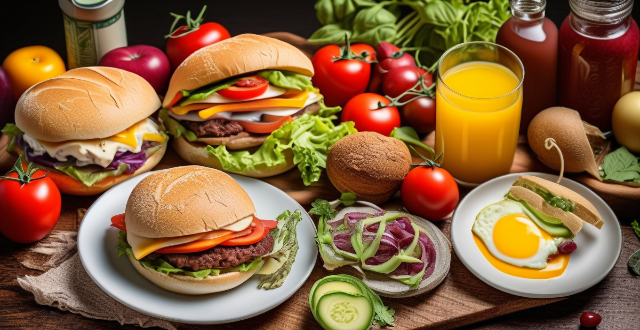
What are some good options for quick and easy vegetarian meals ?
Vegetarian meals can be quick and easy to prepare. Here are some options: stir-fry vegetables with rice or noodles, quinoa salad with roasted vegetables, vegetable soup or broth, veggie burgers with avocado and salsa, and pasta with pesto and cherry tomatoes. These meals can be customized based on preferences and what's available in the kitchen.
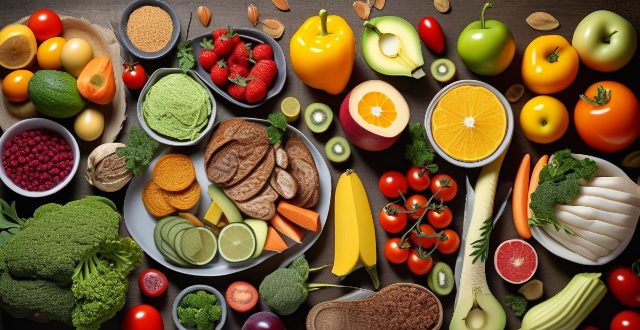
How do I incorporate more fruits and vegetables into my daily meals ?
Incorporating more fruits and vegetables into daily meals is crucial for a balanced diet, providing essential nutrients. To achieve this, start the day with fruit smoothies or salads, snack on vegetable sticks or fruit parings, include veggies in lunch and dinner through salads, stir-fries, and soups, and enjoy fruit-based desserts or healthy cookies. Plan ahead, prep fruits and vegetables in advance, and cook in bulk to simplify the process.

What are some healthy Italian pasta dishes ?
Italian cuisine is known for its delicious pasta dishes, but not all of them are healthy. Here are some healthier options that you can try: 1. Whole Wheat Pasta with Tomato Sauce 2. Zucchini Noodles with Pesto 3. Spaghetti Squash with Marinara Sauce 4. Pasta Primavera 5. Grilled Vegetable Pasta Salad 6. Mushroom Stroganoff 7. Seafood Pasta 8. Caprese Pasta Salad 9. Eggplant Parmesan 10. Vegetable Lasagna
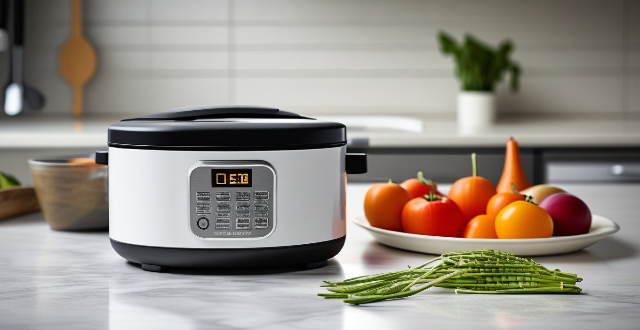
What are some must-have kitchen gadgets for healthy eating ?
In pursuit of healthy eating, having the right kitchen gadgets can significantly improve the preparation and enjoyment of nutritious meals. This article lists essential tools such as a high-quality chef's knife for efficient chopping, a food processor for versatile cooking tasks, a steamer basket for nutrient-rich cooking, and other devices like slow cookers, spiralizers, and immersion blenders that facilitate healthy meal preparation. Each device is discussed in terms of its benefits, uses, and why it is considered essential for healthy cooking. By incorporating these tools into your kitchen setup, you can make preparing healthy meals easier and more enjoyable, setting the foundation for a lifetime of healthy eating habits.

What are some easy and delicious vegetarian recipes for beginners ?
Vegetarianism is a popular dietary choice, but it can be daunting for beginners to find easy and delicious recipes. Here are some simple vegetarian dishes that are perfect for those new to plant-based eating: ## **1\. Roasted Vegetable Pasta** This colorful pasta dish is packed with flavor and nutrition. **Ingredients:** * 1 cup cherry tomatoes, halved * 1 zucchini, sliced * 1 red bell pepper, sliced * 1 yellow onion, chopped * 2 garlic cloves, minced * 8 oz whole wheat pasta * 2 tbsp olive oil * Salt and pepper to taste * Fresh basil leaves for garnish **Instructions:** 1. Preheat oven to 400°F (200°C). 2. Toss the vegetables in olive oil, salt, and pepper. 3. Arrange the vegetables on a baking sheet and roast for 25 minutes or until tender. 4. Cook the pasta according to package instructions. 5. In a large bowl, combine the roasted vegetables and cooked pasta. 6. Garnish with fresh basil leaves and serve warm. ## **2\. Chickpea Curry** This creamy and flavorful curry is perfect for beginners. **Ingredients:** * 1 can chickpeas, drained and rinsed * 1 onion, diced * 2 garlic cloves, minced * 1 tbsp curry powder * 1 tsp ground cumin * 1 tsp ground coriander * 1 tsp turmeric * 1 can coconut milk * Salt to taste **Instructions:** 1. Heat a pan over medium heat and add a tablespoon of oil. 2. Sauté the onion and garlic until soft. 3. Add the spices and cook for another minute. 4. Stir in the chickpeas and coconut milk. 5. Bring to a simmer and cook for 10 minutes or until the sauce thickens. 6. Season with salt and serve hot with rice or naan bread. ## **3\. Lentil Soup** Lentil soup is hearty, nutritious, and easy to make. **Ingredients:** * 1 cup green lentils, rinsed * 1 onion, diced * 2 garlic cloves, minced * 2 carrots, diced * 2 stalks celery, diced * 4 cups vegetable broth * 1 bay leaf * Salt and pepper to taste

How can I prepare a quick and tasty soup ?
In this text, the author provides a simple and quick recipe for preparing a tasty soup at home. They detail the ingredients needed, including olive oil, onion, garlic, carrots, celery, zucchini, vegetable broth, white beans, spinach, salt, pepper, and fresh herbs for garnish. The instructions are broken down into six steps: sautéing the vegetables, adding broth and beans, simmering, adding spinach, seasoning, and garnishing before serving. The author also offers tips for variations, adding protein, and spicing up the soup. Overall, the text emphasizes the versatility and nutritional value of soups while providing a straightforward recipe for a delicious homemade option.
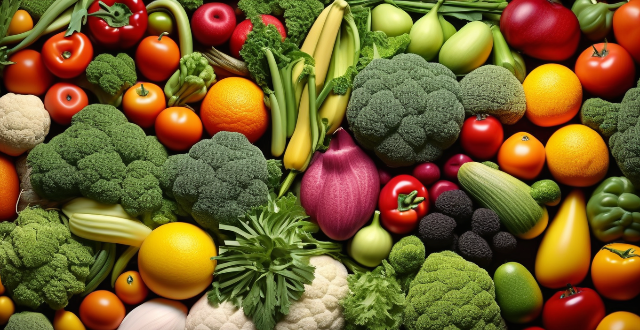
How can I make sure my fruits and vegetables are organic ?
To ensure your fruits and vegetables are organic, buyTo ensure your fruits and vegetables are organic, buy stores, grow your own using avoid contamination by washing produce thoroughly, and educate yourself on the latest research and news about organic farming.
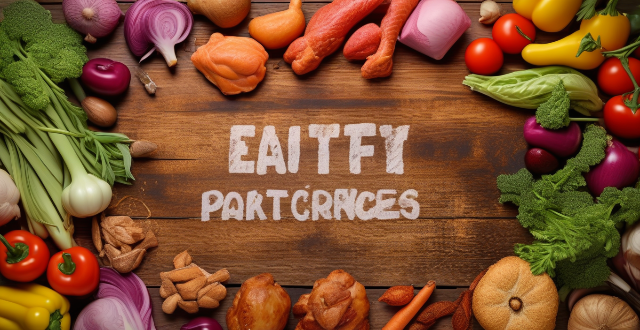
Can you suggest any easy-to-make lunch box recipes ?
The text provides a list of easy-to-make lunch box recipes. The first recipe is for grilled chicken and vegetable skewers, which involves marinating chicken breasts in a favorite sauce, cutting vegetables into large chunks, threading them onto skewers, and grilling until cooked through. The second recipe is for hummus and veggie wrap, which involves spreading hummus on a whole wheat tortilla, adding sliced cucumbers, carrots, and bell peppers, rolling up tightly, and slicing in half. The third recipe is for tuna salad lettuce wraps, which involves mixing canned tuna with mayo, lemon juice, and chopped celery, spooning the mixture onto lettuce leaves, and rolling up. The fourth recipe is for quinoa salad, which involves cooking quinoa according to package instructions, tossing with chopped tomatoes, cucumbers, feta cheese, and a simple vinaigrette, and packing in a container with pita chips or crackers. The fifth recipe is for egg salad sandwich, which involves hard boiling eggs, chopping them up, mixing with mayo, mustard, salt, and pepper, and serving on whole grain bread with lettuce and tomato. The sixth recipe is for Caprese salad, which involves slicing fresh mozzarella and tomatoes, drizzling with olive oil and balsamic vinegar, adding fresh basil leaves, and seasoning with salt and pepper. The seventh recipe is for turkey and cheese roll-ups, which involves laying out slices of turkey and cheese on a slice of bread, rolling up tightly, and slicing into bite-sized pieces. The eighth recipe is for Greek yogurt parfait, which involves layering Greek yogurt, granola, and fresh fruit in a jar or container, and topping with honey or maple syrup if desired. The ninth recipe is for black bean and corn salad, which involves rinsing and draining a can of black beans, mixing with canned corn, diced red onion, cherry tomatoes, and a lime vinaigrette, and serving chilled with tortilla chips or crackers. The tenth recipe is for avocado toast, which involves mashing an avocado with lime juice and salt, spreading on toasted whole grain bread, and topping with everything bagel seasoning or red pepper flakes for extra flavor.

How does a food processor save time in the kitchen ?
A food processor saves time in the kitchen by chopping, grating, pureeing, kneading dough, slicing, shredding, and making pie crust quickly and efficiently.
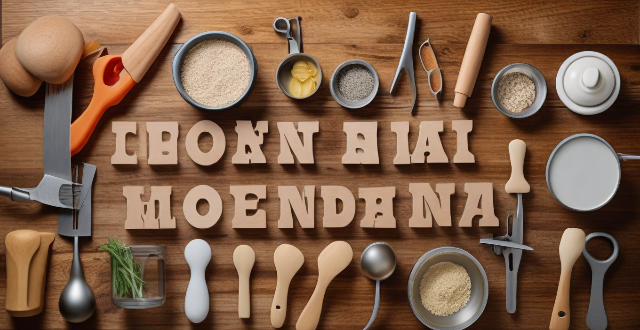
What are the essential kitchen tools every home cook should have ?
The text provides a list of essential kitchen tools that every home cook should have, including a chef's knife, cutting board, measuring cups and spoons, mixing bowls, saucepan, skillet/frying pan, baking sheet/roasting pan, whisk, wooden spoon or spatula, can opener, garlic press, grater, peeler, tongs, and colander/strainer. These tools are important for preparing meals and ensuring accurate measurements and successful cooking.

What are some go-to vegetarian or vegan home-cooked options ?
Vegetarian and vegan home-cooked options are not only delicious but also healthy and environmentally friendly. Here are some go-to vegetarian or vegan home-cooked options: 1. Lentil Soup: A hearty and nutritious option for vegetarians and vegans. It is easy to make and can be customized with different vegetables and spices. 2. Chickpea Curry: A flavorful and filling dish that is perfect for vegetarians and vegans. It is made with chickpeas, vegetables, and spices. 3. Quinoa Salad: A healthy and versatile option for vegetarians and vegans. It can be made with different vegetables and dressings.
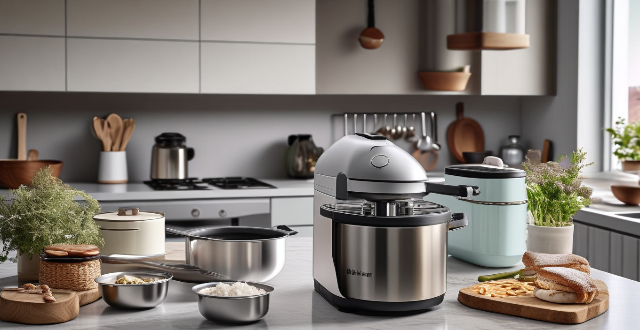
How can I use kitchen appliances to save time while cooking ?
Using kitchen appliances like food processors, slow cookUsing kitchen appliances like food processors, slow cookers, rice cookers, slow cookers, electric pressure cookers, rice cookers, and stand mixers can significantly save time in meal preparation. These appliances offer features such as chopping, grinding, making dough, cooking at different heat settings, and precise mixing, allowing for efficient and convenient cooking experiences.

How do I properly use a chef's knife in the kitchen ?
Using a chef's knife properly is essential for efficient and safe food preparation. Here are some tips on how to use a chef's knife correctly: Holding the Knife Correctly: Hold the handle firmly with your dominant hand, using a grip that feels comfortable and secure. Place your index finger and thumb on either side of the handle, with your other fingers curled around it. Keep your thumb tucked in towards the handle to avoid accidents. Chopping Technique: Maintain a slight angle (about 20 degrees) between the blade and the cutting board to make it easier to slice through tough ingredients. Use a rocking motion, pressing down on the blade at the end closest to the tip and then lifting at the handle end, to create a smooth chopping action. Slicing Technique: Start by drawing the blade back slightly before making the cut. As you push down on the blade, pull it towards you to make a long, even slice. Safety Tips: Sharpen your knife regularly as a sharp knife is safer than a dull one. Always keep your fingers out of the path of the blade to avoid accidents. Use a stable cutting board to protect your countertops and provide a safe surface for cutting. By following these guidelines, you can effectively and safely use a chef's knife in the kitchen. Remember to practice regularly to improve your skills and confidence with this versatile tool.
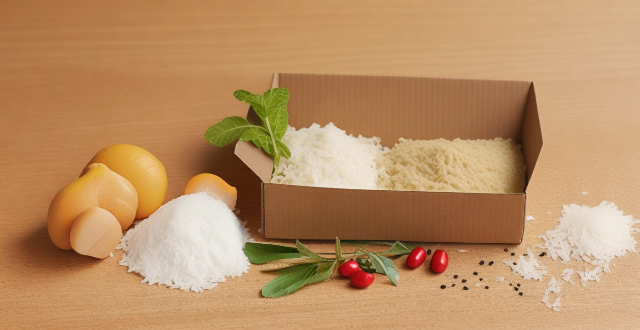
How do I make a bento box meal ?
How to make a bento box meal with rice, protein, vegetables, and garnishes. Includes steps for cooking rice, preparing protein, cutting vegetables, assembling the bento box, and packing it for later enjoyment.
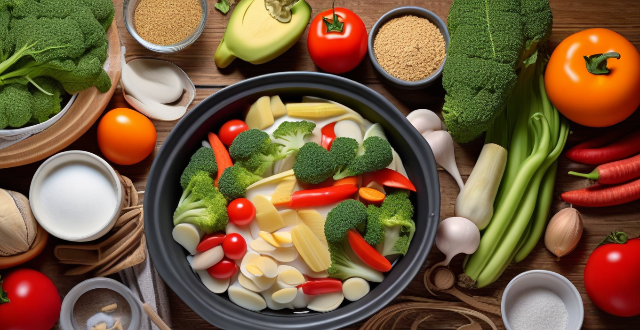
How can I make my favorite takeout dishes at home ?
Learn how to make your favorite takeout dishes at home with these tips and tricks. Gather all the necessary ingredients, including spices, proteins, vegetables, sauces, and rice or noodles. Equip yourself with sharp knives, mixing bowls, a wok or large pan, a steamer basket, and a rice cooker or pot. Master techniques such as marinating, stir-frying, steaming, and simmering. Don't rush the process; taste as you go; use fresh ingredients; experiment with spices; and practice makes perfect. Making your favorite takeout dishes at home is not only cost-effective but also allows you to customize them to your liking.

How do I meal prep for a week using simple home-cooked recipes ?
Meal prepping is an excellent way to save time, money, and ensure that you are eating healthy meals throughout the week. Here's how you can meal prep for a week using simple home-cooked recipes: 1. Plan your meals based on your dietary needs, preferences, and schedule. 2. Shop for ingredients according to your meal plan. 3. Prep your ingredients ahead of time by washing, chopping, and storing them in airtight containers. 4. Cook and assemble your meals into individual portions and store them in meal prep containers. 5. Reheat and enjoy your pre-made meals throughout the week. By following these steps, you can successfully meal prep for an entire week using simple home-cooked recipes.
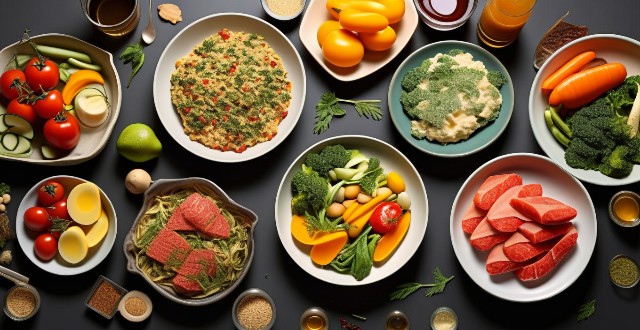
Can you suggest any budget-friendly dinner recipes that don't compromise on taste ?
Budget-friendly dinner recipes include spaghetti aglio e olio, vegetable stir fry, chickpea curry, and lentil soup. These dishes are easy to make with simple ingredients and won't break the bank.

What are the most popular vegetarian dinner recipes ?
Vegetarian dinner recipes have become increasingly popular in recent years as people are looking for healthier and more sustainable food options. Here are some of the most popular vegetarian dinner recipes: 1. Lentil Soup: A hearty and filling meal that is perfect for colder months, packed with protein, fiber, and nutrients. 2. Chickpea Curry: A flavorful and satisfying dish that is easy to make, perfect for those who love Indian cuisine. 3. Roasted Vegetable Quinoa Bowl: A healthy and colorful meal that is perfect for meal prep, packed with vegetables, protein, and fiber.

What's the secret to making crispy fried calamari ?
Fried calamari is a popular dish in many cuisines, and achieving that perfect crispy texture can be a challenge. Here's a step-by-step guide on how to make crispy fried calamari: Ingredients: Calamari rings, Flour, Salt, Black Pepper, Garlic Powder, Paprika, Lemon Juice, Vegetable Oil for frying. Steps: Clean the calamari thoroughly under running water. Remove the heads and innards from the tubes. Cut the tubes into rings about ½ inch wide. In a large bowl, mix together flour, salt, black pepper, garlic powder, paprika, and lemon juice to form a batter. Add the calamari rings to the bowl and coat them evenly with the batter. Let the calamari marinate in the mixture for at least 30 minutes. Heat vegetable oil in a deep fryer or large pan over medium-high heat. Once the oil is hot, carefully add the calamari rings to the fryer or pan. Fry the calamari until they are golden brown and crispy, stirring occasionally to prevent sticking. Use a slotted spoon to remove the fried calamari from the oil and place them on a paper towel-lined plate to drain excess oil. Serve the crispy fried calamari hot with your favorite dipping sauce. Some popular options include marinara sauce, tartar sauce, or aioli.

Can you recommend any tasty and healthy low-calorie soup recipes for lunch ?
Here is a topic summary for the text: The text recommends three tasty and healthy low-calorie soup recipes for lunch. The first recipe is Tomato Basil Soup, which is low in calories and packed with vitamins and antioxidants. The second recipe is Carrot Ginger Soup, which is healthy and comforting with a sweet and spicy flavor. The third recipe is Broccoli Cheddar Soup, which is a bit higher in calories but still a healthy and delicious option with a rich and flavorful taste. All three recipes are easy to make and can be enjoyed as a satisfying and nutritious lunch option.

How do I make a traditional Indian curry at home ?
How to Make a Traditional Indian Curry at Home Indian curry is a flavorful and aromatic dish that can be made with various vegetables, meats, or legumes. Here's a step-by-step guide to making a traditional Indian curry at home: Ingredients: - 2 tablespoons vegetable oil - 1 onion, finely chopped - 2 garlic cloves, minced - 1 tablespoon grated fresh ginger - 2 teaspoons ground cumin - 1 teaspoon ground coriander - 1 teaspoon turmeric powder - 1 teaspoon paprika - 1 teaspoon salt - 1 can (14 ounces) diced tomatoes - 1 can (14 ounces) coconut milk - 1 pound chicken breasts or thighs, cut into bite-sized pieces - Fresh cilantro leaves, chopped (optional) Instructions: Step 1: Heat the Oil Heat the vegetable oil in a large skillet over medium heat. Step 2: Sauté the Onion Add the chopped onion to the skillet and cook until it becomes translucent, stirring occasionally. This should take about 5 minutes. Step 3: Add Garlic and Ginger Stir in the minced garlic and grated ginger and cook for another minute until fragrant. Step 4: Add Spices Add the ground cumin, ground coriander, turmeric powder, paprika, and salt to the skillet. Stir well to combine with the onion mixture. Cook for about 30 seconds until the spices are fragrant. Step 5: Add Tomatoes and Coconut Milk Pour in the can of diced tomatoes and coconut milk into the skillet. Stir well to combine all the ingredients. Bring the mixture to a simmer. Step 6: Add Chicken Add the bite-sized pieces of chicken to the skillet. Stir well to coat the chicken with the sauce. Cover the skillet with a lid and let it simmer for about 20 minutes or until the chicken is cooked through. Step 7: Garnish with Cilantro (Optional) Once the chicken is cooked, remove the skillet from heat and sprinkle some fresh cilantro leaves on top of the curry if desired. Your traditional Indian curry is now ready to serve! Enjoy it with rice or naan bread for a complete meal.
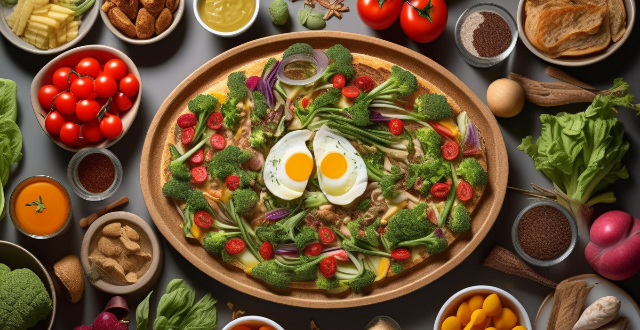
Can vegetarians enjoy a variety of Indian food ?
Vegetarians can enjoy a variety of Indian food due to the country's diverse cuisine and common dietary choice. Traditional vegetarian dishes like Chana Masala and Palak Paneer offer delicious options, while regional variations such as South Indian Dosas and Gujarati Thali provide unique flavors. Street food also presents numerous vegetarian choices like Pani Puri and Vada Pav. Additionally, global influence has led to more vegetarian versions of classic dishes in restaurants worldwide.

What are some good ideas for quick lunches ?
When it comes to quick lunches, there are plenty of options that are both healthy and satisfying. Here are some ideas: 1. Sandwiches: Peanut Butter and Jelly, Turkey and Cheese, Hummus and Veggie Wrap 2. Salads: Greek Salad, Chicken Caesar Salad, Quinoa Salad 3. Soups and Stews: Tomato Soup, Chicken Noodle Soup, Vegetable Stew 4. Pasta Dishes: Spaghetti with Marinara Sauce, Macaroni and Cheese, Pasta Salad 5. Breakfast for Lunch: Egg and Cheese Sandwich, Oatmeal, Yogurt Parfait These are just a few ideas to get you started on your quick lunch journey. Remember to mix and match ingredients to create your own unique combinations!

What are some vegetarian Italian pasta recipes ?
Italian cuisine is known for its delicious pasta dishes, and there are plenty of vegetarian options to choose from. Here are some vegetarian Italian pasta recipes that you can try: 1. Spaghetti with Tomato Sauce 2. Mushroom Stroganoff 3. Pesto Pasta 4. Roasted Vegetable Pasta 5. Creamy Spinach Pasta